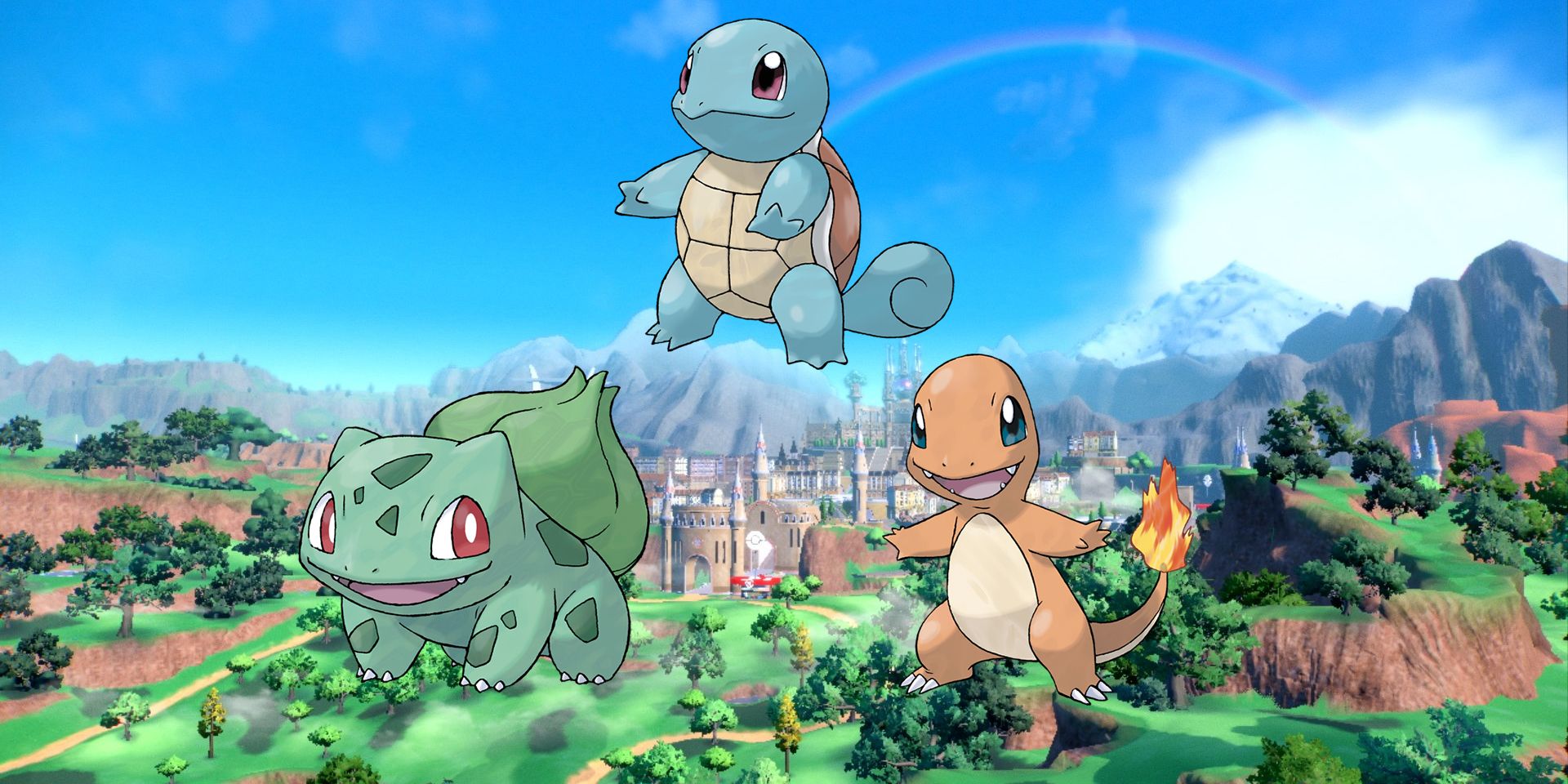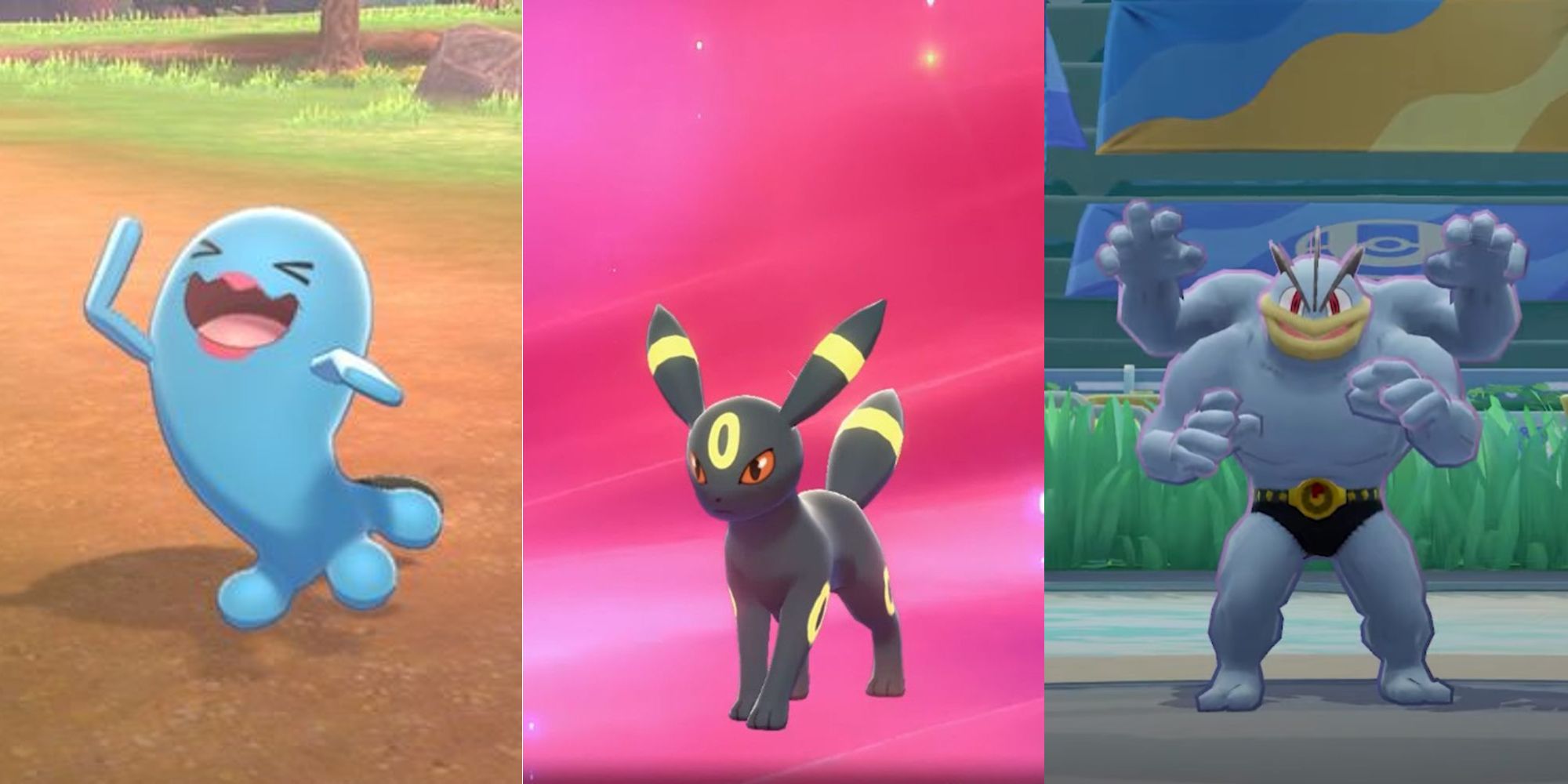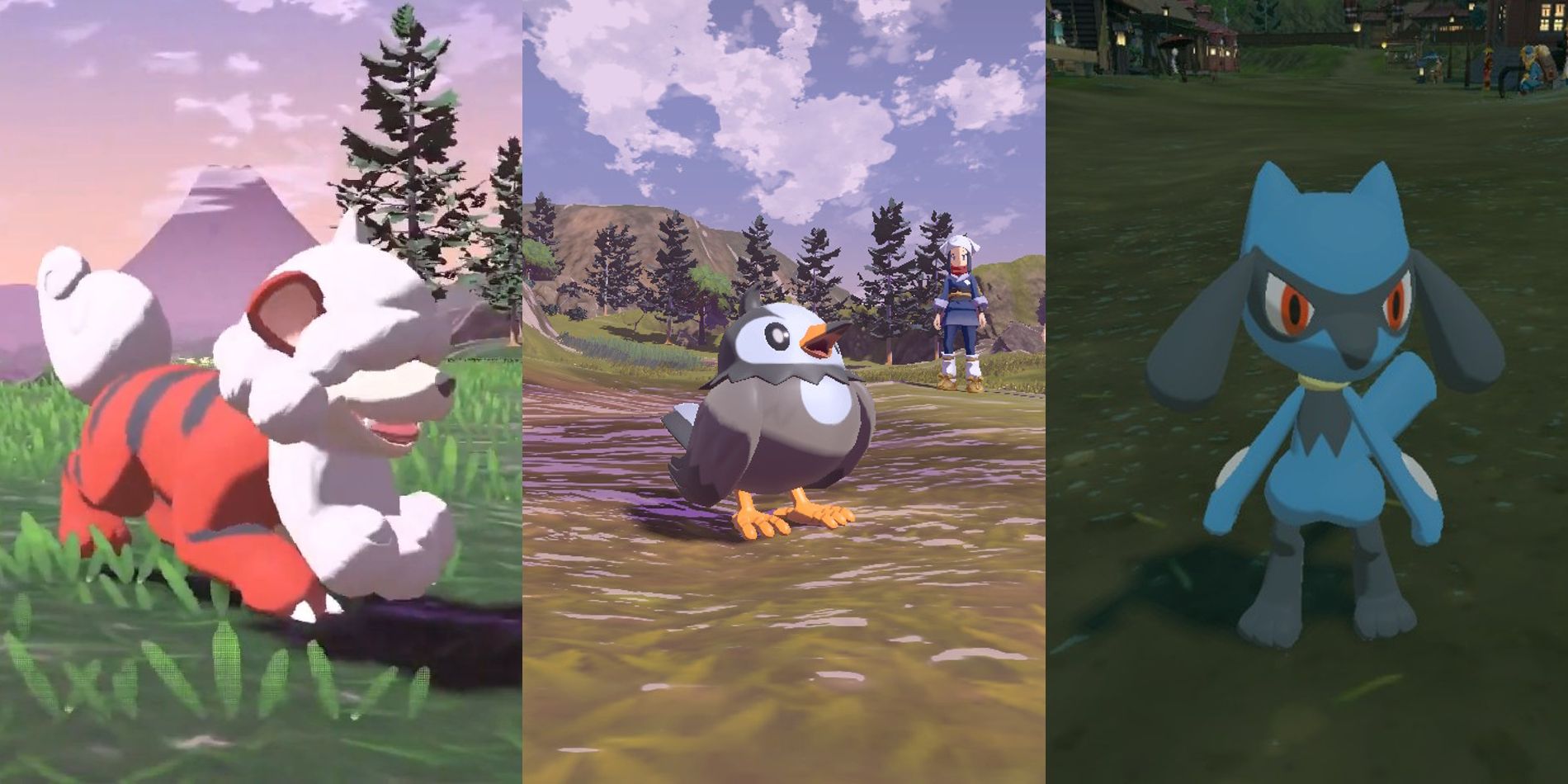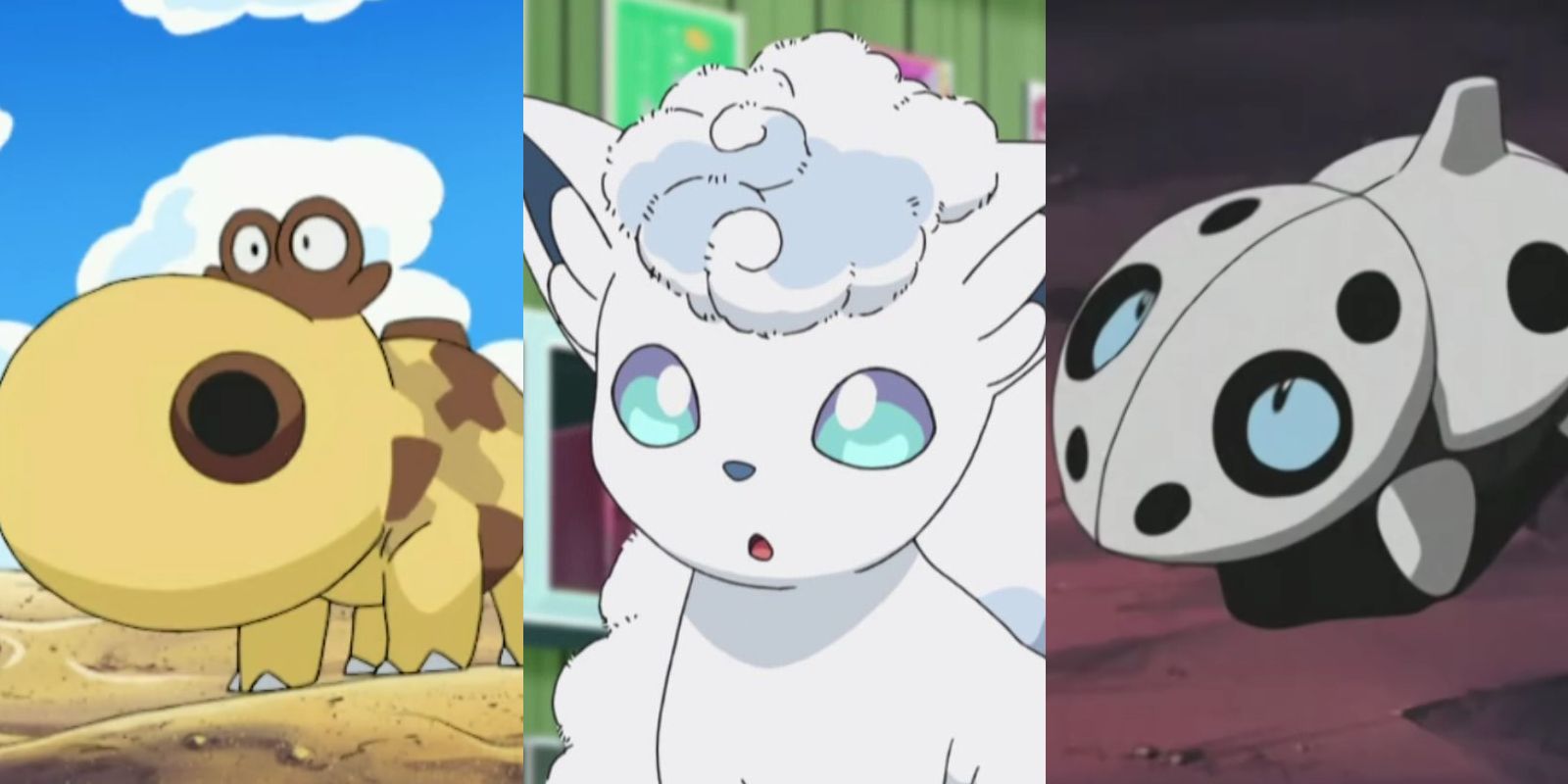
Out of the many Pokémon games in the series, all have used the same type triangle for their starter partners. Although the starters are still beloved fan-favorite Pokémon, using the same primary types for the series' entire 25-year life has left them feeling stale, so they could benefit from more variety. There are other type combinations available, so hopefully different kinds of starters come to future Pokémon games.
In Pokémon, each creature - and the moves they use - has a primary type, and many species have secondary ones. These types determine how effective moves are against other Pokémon, with each type having others that they're strong and weak against. There are many single-type Pokémon that appear to have secondary types, and are able to use many moves with types outside of theirs, but don't share the strengths or weaknesses. Some types form a Rock-Paper-Scissors triangle, where one is strong against a second, which in turn is strong against a third, and the third is strong against the first. Water, Fire, and Grass is one such triangle, and is traditional for the starter Pokémon players choose from at the start of each game.
Grass/Water/Fire is not the only combination of types that starters could use while still maintaining the Rock-Paper-Scissors triangle. Although none may be as iconic as the traditional three types, they still have a lot of potential that isn't being put to use. There are many deserving Pokémon that could be great starters but aren't one of the typical types. Even if Grass, Water, and Fire were kept as secondary types, if the primary ones changed, it could still make the starters feel new and refreshing.

Aside from Grass/Fire/Water, Dark/Psychic/Fighting may be the best type triangle in Pokémon. Fighting is strong against Dark, which is strong against Psychic, which is strong against Fighting. Dark is also completely immune to Psychic, giving it an extra twist that the traditional starter triangle doesn't have. Generation 6 of the games, the Kalos region, used these for the starters' secondary types, but the primary ones were still the traditional combination. Using them as the primary types could be a good way to ease into different kinds of starters while still maintaining some sense of familiarity.
There are many possible designs for Dark, Psychic, and Fighting-type starters. Pokémon's Fire, Grass, and Water-type starters draw inspiration from a variety of real-life animals, and are able to do so because those elements can be applied to almost anything. The Dark, Psychic, and Fighting types are similarly vague enough that they can be based on many different creatures. A bat could be a good choice for Dark, and although Flying as a secondary type may prove to be too much of an advantage over Fighting, Decidueye has proved that flight-capable starters don't necessarily need to be Flying-type. A badger could be good for Fighting due to their fearless fighting spirit, and a cat along the likes of Litten and Sprigatito could be a good choice for Psychic as long as it's distinct from Espeon or Mew.

Rock/Flying/Fighting is another type triangle in Pokémon. Flying is super-effective against Fighting, which beats Rock, which is strong against Flying. A flying mount is available in Pokémon Legends: Arceus, and many other games have used them primarily as a method of fast-traveling across the region using the move Fly after a certain point, so using this combination could put Flying-types in the spotlight of a game instead of having them serve as a utility. While Fighting and Rock-types get their fair share of attention, they're typically shoehorned into being beatsticks, so being starters could also help them expand beyond the roles they've typically played in past games.
Rock and Fighting both have enough room to be able to use a wide variety of creatures as their inspiration, but Flying is somewhat more limited. Most Flying-types are based on birds or other winged animals, and although they don't strictly need to be given that Pokémon is a fantasy series, having a Flying starter that doesn't at least have wings could be quite strange. Some Pokémon from space or other dimensions are capable of flight without wings, but they're typically Dragon or Psychic-type, and have alternative methods of flying. Other animals associated with flight are available, such as flying squirrels or sugar gliders, and there's also the option for a Flying-type based more on the concept of wind than flight itself. Rock may be better off as a creature with armored stony plates rather than one actually made of stone like many are, and Fighting could benefit from being more bestial than most of its humanoid designs.

Ground, Steel, and Ice-types are another triangle combination in the Pokémon games. Ice is strong against Ground, which is strong against Steel, which is strong against Ice. Ice is the rarest type in the series - even more so than Dragon - with just 51 species having it as their primary or secondary type, 5.62% of all Pokémon total including regional forms. Pokémon's Ice-types are notoriously weak, so improvements and greater numbers can help it stand up against other types. Steel is almost as rare as Ice - albeit much stronger - with just 7.27% of species. Ground is a versatile type that plays well, but it's another rare one at 7.71%. All three have their own strengths, but aren't as represented or given as much attention as much as they could, so being one of the first Pokémon that Trainers pick when they start their Journeys can bring them into more prominent roles.
An Ice starter may be a bit out of place in the first town. They're typically reserved for the late game, in inhospitable snowy regions that are very different from the welcoming early stages of the games. Pokémon Sword and Shield's best Ice-types aren't available until Route 8, after five badges have been obtained, for example. Its starter form may be better off staying simple, and based on a common woodland or suburban animal instead of the exotic seals and plesiosaurs that many are. Ground-types have a wide variety of possible inspirations, but have a similar problem to Ice in that they're often desert-dwelling or subterranean creatures, so a more common design may be better as well. A Steel starter could be better off without the metallic armor that many of its type are known for, with metal accents as a better option so as to not make it feel overly harsh. Pokémon has many opportunities to use different type combinations for its starters like these, and hopefully, it will take advantage of them.
Comments
Post a Comment